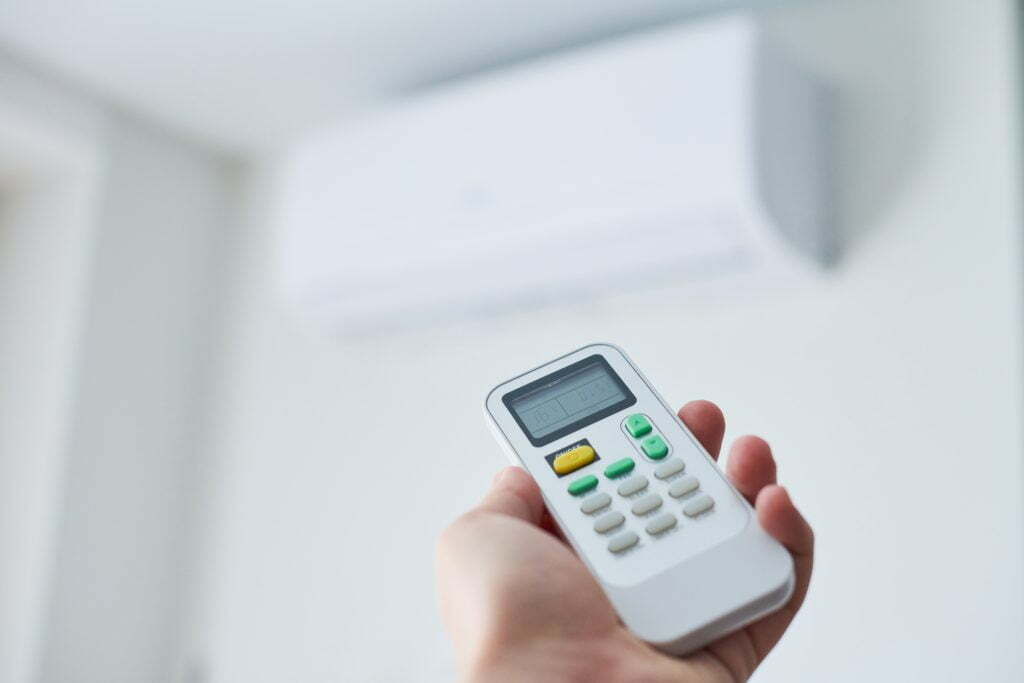A ductless mini-split system can be a convenient and effective way of cooling and heating interior areas. From older homes with limited central air options to room additions and warmer sunrooms, there are many places where a mini-split system would be beneficial. Many people often wonder, however, if mini splits are energy efficient.
So, are mini splits energy efficient? These systems are more energy-efficient than larger HVAC units and can reduce energy usage by as much as 30 percent. However, they may not be right for every situation. Let’s take a look at mini splits and how a system could benefit your space.
What is a mini-split system?

Mini-split systems are similar to heat pump technology. An evaporator and a condenser use refrigerant and phase changes to provide heating and cooling. They are essentially high-efficiency air conditioners that can also function as a heater when run in reverse. The condenser is typically located outside on a concrete pad and distributes refrigerant through a small copper tube connected to a unit inside. The inside unit is the evaporator and air handler and is usually mounted on a wall or the floor. They typically perform well in areas where the heating and cooling load is not very high.
Depending on the setting, the unit can cool or heat a space. When used as an air conditioner, the unit pulls heat and humidity from the air while forcing out dryer, cooler air. The system draws heat from the outdoor air and warms it to blow hot air into the space as a heater. You can have a few indoor units that operate off of one outdoor unit based on the model. The system requires no new ductwork, so you won’t have any expensive renovations to make. Additionally, you can have zoned climate control where these systems can heat or cool separate spaces independent from any other central air or heat.
Why are mini-splits more efficient?

A mini-split system relies on a variable-speed compressor that automatically adjusts to provide the appropriate amount of cooling or heating needed. This is generally more efficient than traditional heating and cooling systems that operate at full capacity while on. Not only does this consume more energy, but the constant cycling on and off can also create inconsistent temperatures.
Aside from variable-speed technology, mini-splits are ductless systems, which means that they don’t rely on a network of air ducts that are susceptible to damage and leaks. With traditional systems, leaky ductwork can account for as much as 50 percent of heating and cooling loss. As a result, the units have to expend more energy to heat and cool a house. With mini-splits, however, this problem is eliminated as hot and cool air gets delivered directly to the area it is needed. This reduces energy consumption and can significantly reduce energy bills.
Is a mini-split right for you?
A mini-split system is a very efficient heating and cooling system. It is not the best choice for every home, but there are several situations where a mini-split system might be a good choice for your home. If there are rooms or areas in your home where the temperature is different, a mini-split might be a perfect fit. You can supplement cool or warm air into a specific space without impacting the temperature of the rest of the home. New additions or basement renovations are also ideal for mini splits, as you can add comfortable temperatures without overhauling the HVAC system. Finally, if you have an older home where central air would be a cost-prohibitive upgrade, a mini-split could be a solution to your HVAC issues.
Mini-splits are a great, energy-efficient solution for many homes with HVAC concerns. Installing a new mini-split system could help you save money and provide heating and cooling in the right areas.





